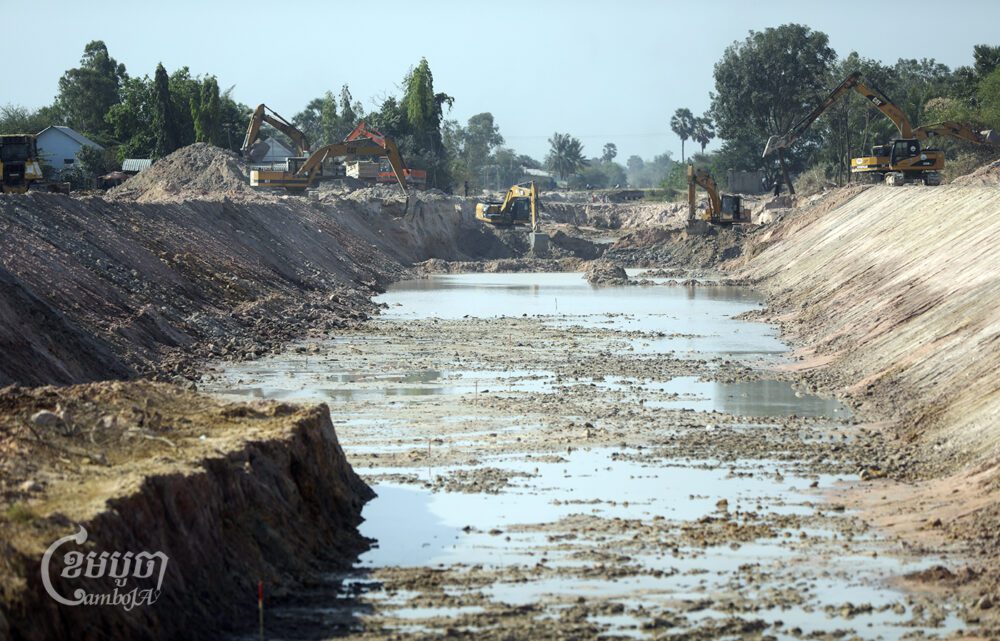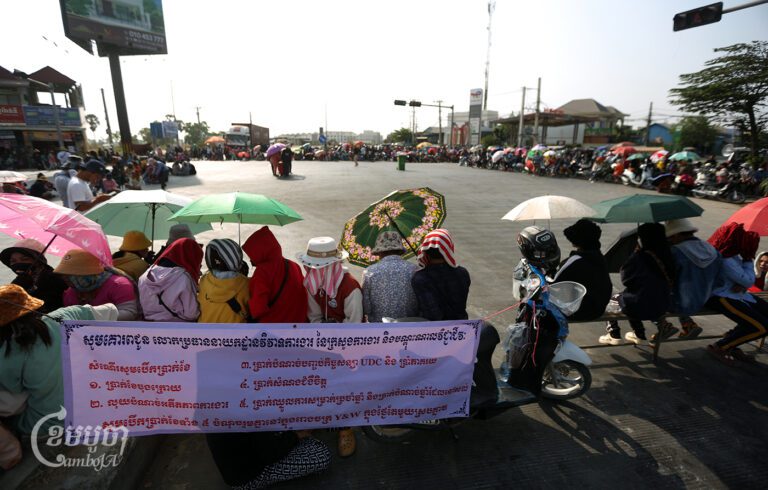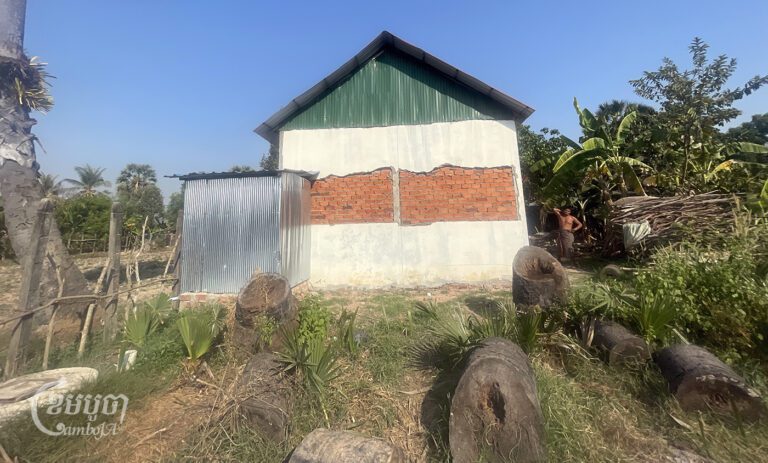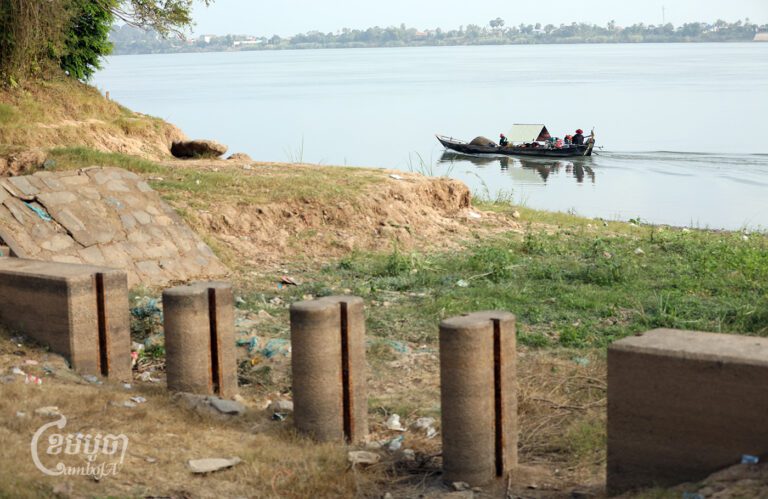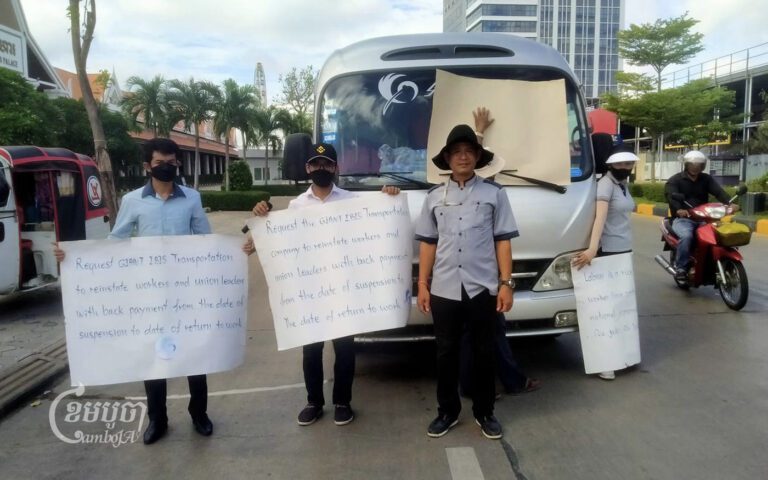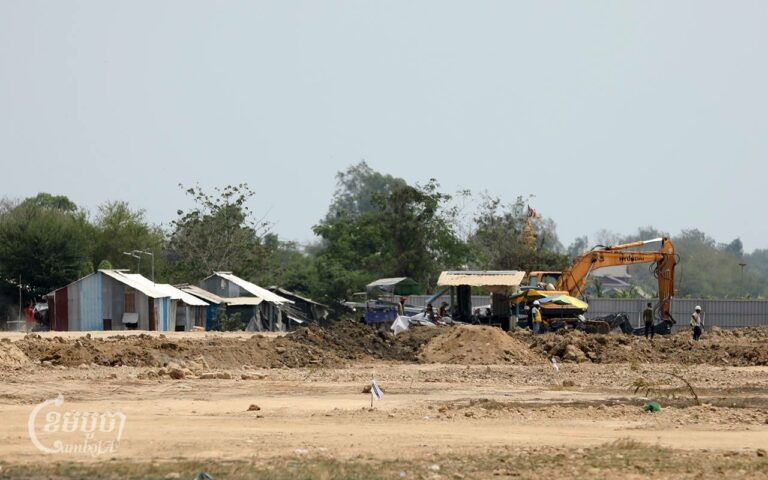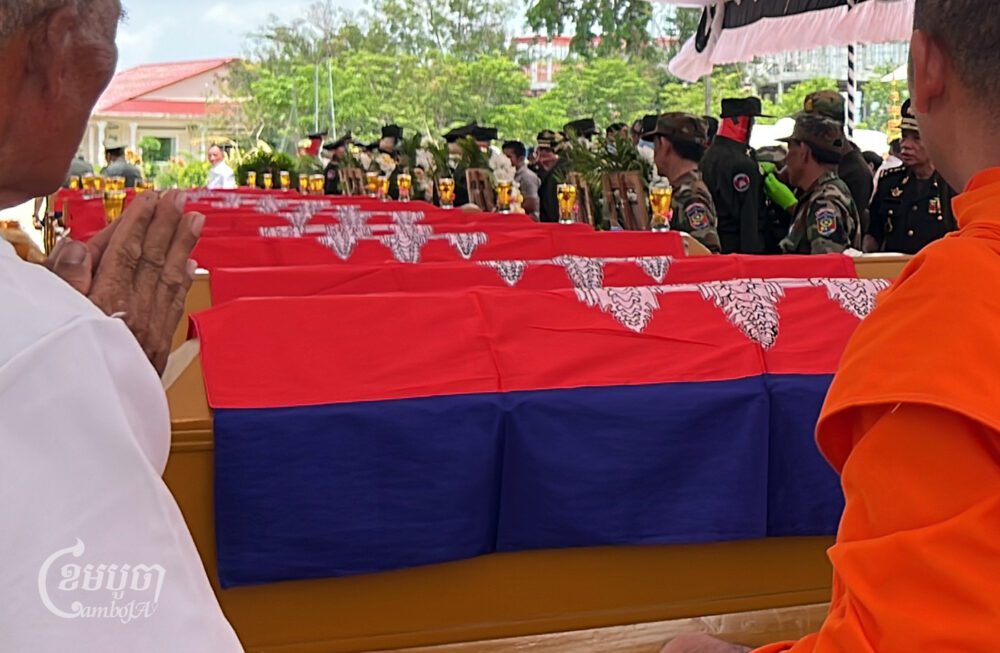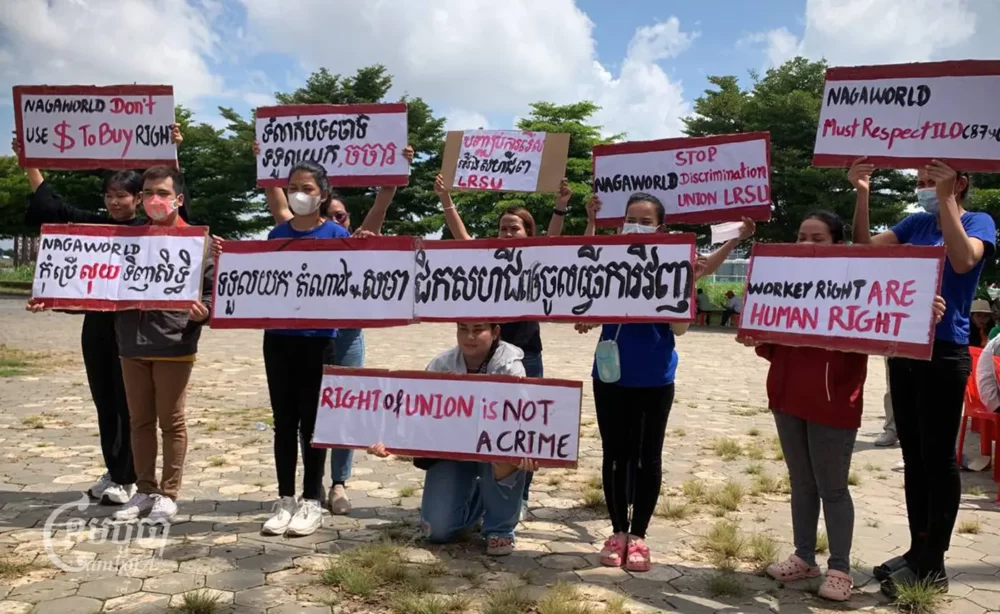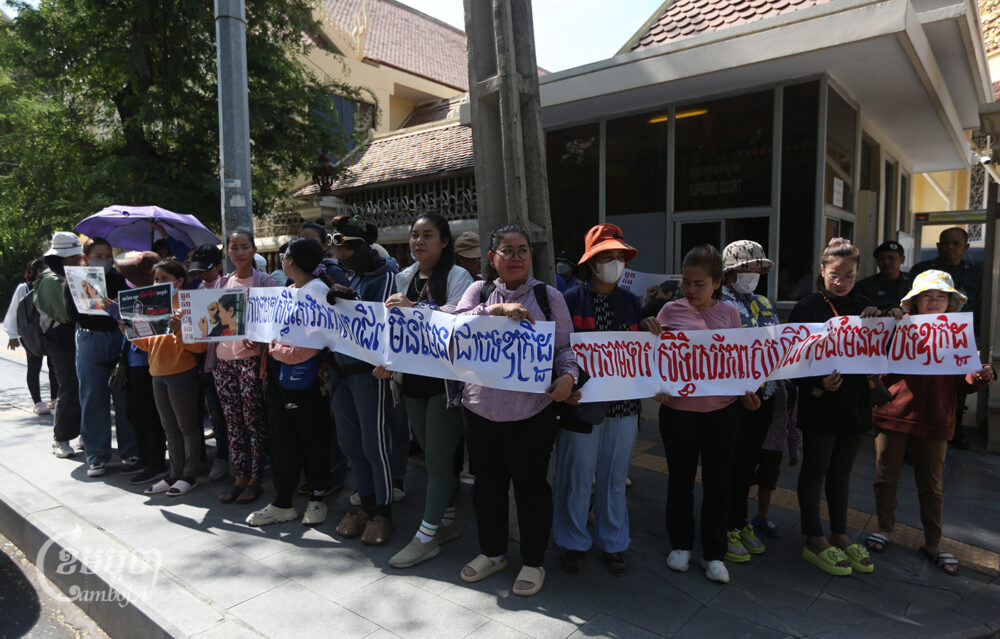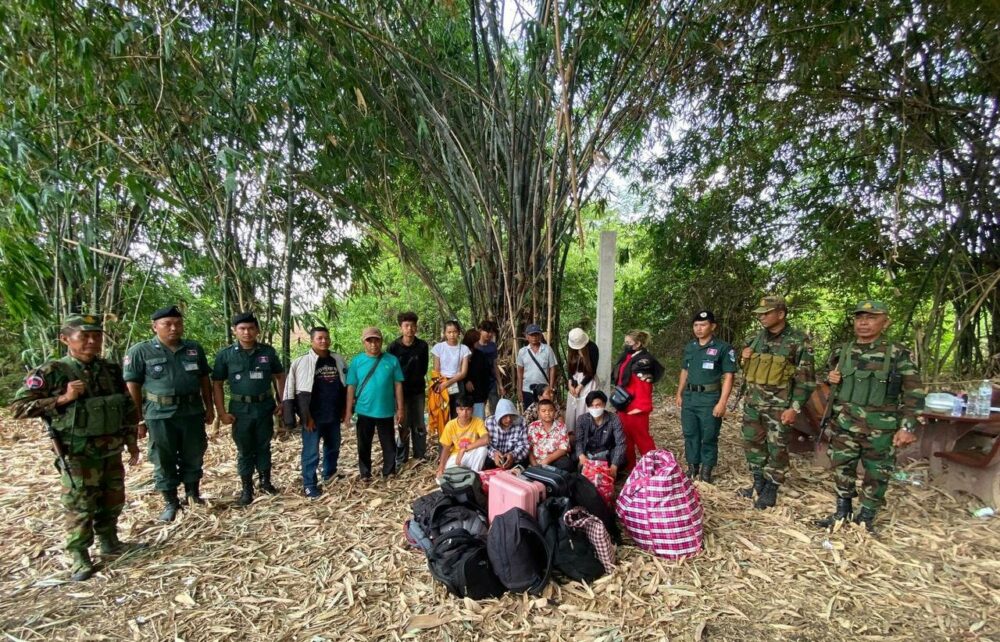The villagers of Prey Vihear commune in Kong Pisei district are eagerly awaiting compensation for their land and homes as the flood diversion canal project in Kampong Speu province entered its third week, with no updates in sight.
Just before dawn on February 29, over 10 bulldozers and excavators began digging canals on fields previously used for farming. The canal spans more than 50 meters in width.
At the site, a villager in her 50s was heard yelling angrily at a tractor driver who had carelessly driven through her mango plantation and destroyed the fence.
Requesting anonymity due to safety reasons, the woman told CamboJA that villagers were unaware of the canal project until the last minute. The commune chief only informed them a day before the excavators appeared.
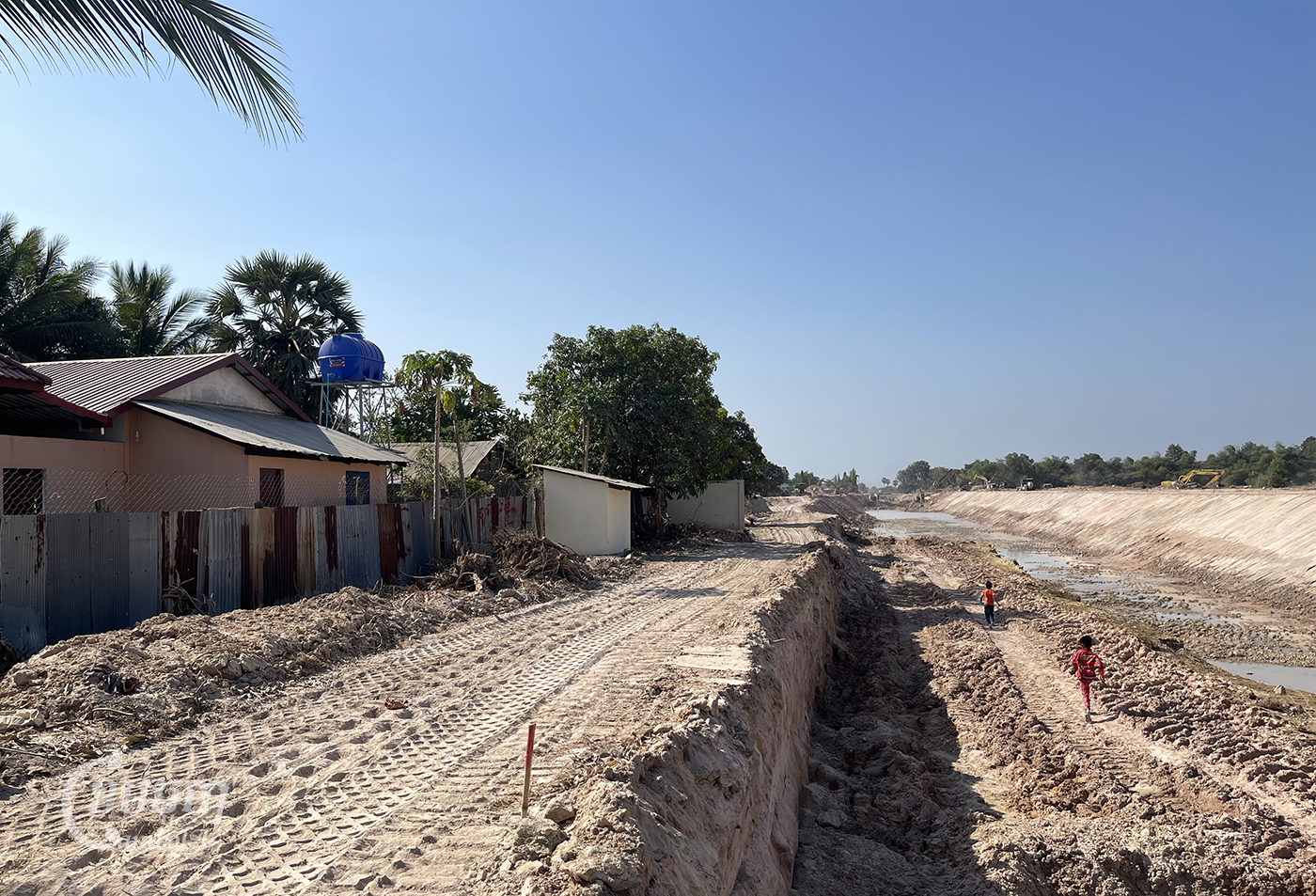
According to Kampong Speu Department of Water Resources and Meteorology director Nhanh Cheab Horng, the Ministry of Water Resources and Meteorology is implementing a flood mitigation project in the capital city and Kandal.
The project involves digging new canals, as well as widening and modernizing existing canals to eliminate flooding in the cities. The canals will pass through Phnom Penh, Kandal, Kampong Speu and Takeo.
The villager said the authorities have yet to discuss the issue of compensation with them, although they have been promised that some amount would be offered for those affected.
“I don’t know how they will calculate the compensation. I heard that they have given it [to people], but I don’t know when they will give it to us,” she mused, adding that the land where their houses and farmlands are located already possess titles.
“If the commune chief cared about the people, he would have called for a meeting a long time ago so that affected villagers can come and see first and be compensated.
“Doing this gives people confidence, but so far, there is no confidence because they called a meeting only a day earlier, and the next day they started digging,” she said. “They did not say anything to make the people feel at ease. There is also no paper to show affected people would be paid something.”
Her house is in the way of the additional eight meter expansion of the existing canal, she said, although it has not been demolished yet. She will wait until the authorities assess the condition but in the meantime, many of her mango trees have been destroyed by the excavators.

Another villager at Prey Vihear, who declined to be named, said his rice field was also in the canal’s path. He too did not know about the project until the authority called those who are affected for a meeting.
During the meeting attended by Cheab Horng, Kong Pisei deputy district governor and commune chief, villagers were told that five villages in the commune would be affected by this project. The authorities only spoke in general about the project.
Villagers were told that those whose properties are affected, would receive compensation but he is not sure when that would happen.
To his knowledge, the canal size was said to be “only 34 meters wide on its surface”, but he learned that it is being expanded to 50 meters. “That is eight meters extra on both sides,” he said, adding that he would wait for the compensation.
Sreylun, another Prey Vihear villager said, “I just want to know if someone will solve our problem and what is the exact amount of the compensation.” This is so because it was difficult enough to secure one plot of land.
Prey Vihear commune chief Koul Thun said the construction and restoration of the canal will affect the houses, factories and farms of 134 families in five villages in the commune.
Prior to the excavation, he invited all the affected villagers to inform them about the project, Thun said, assuring that the government would pay compensation.
However, he does not know “what kind of compensation”, as the state is working on it and it has not reached his village yet.
“People are always asking me [about the compensation]. I told them to wait for the impact resolution team to [settle it],” he said, adding that the authorities have not allowed excavators to dig the land where the houses are located yet, although some fences have been removed since work started.
Government officer Cheab Horng explained that the canal measures 57 kilometers in length with a depth of five meters. Sloping downwards, the canal’s width at the bottom is 20 meters and 50 meters on the surface.
They would run in two directions. The first direction begins at Touch stream and goes all the way to Chong Rok commune in Kong Pisei district while the second canal is between Chong Rok commune and Slakou stream, he told CamboJA.
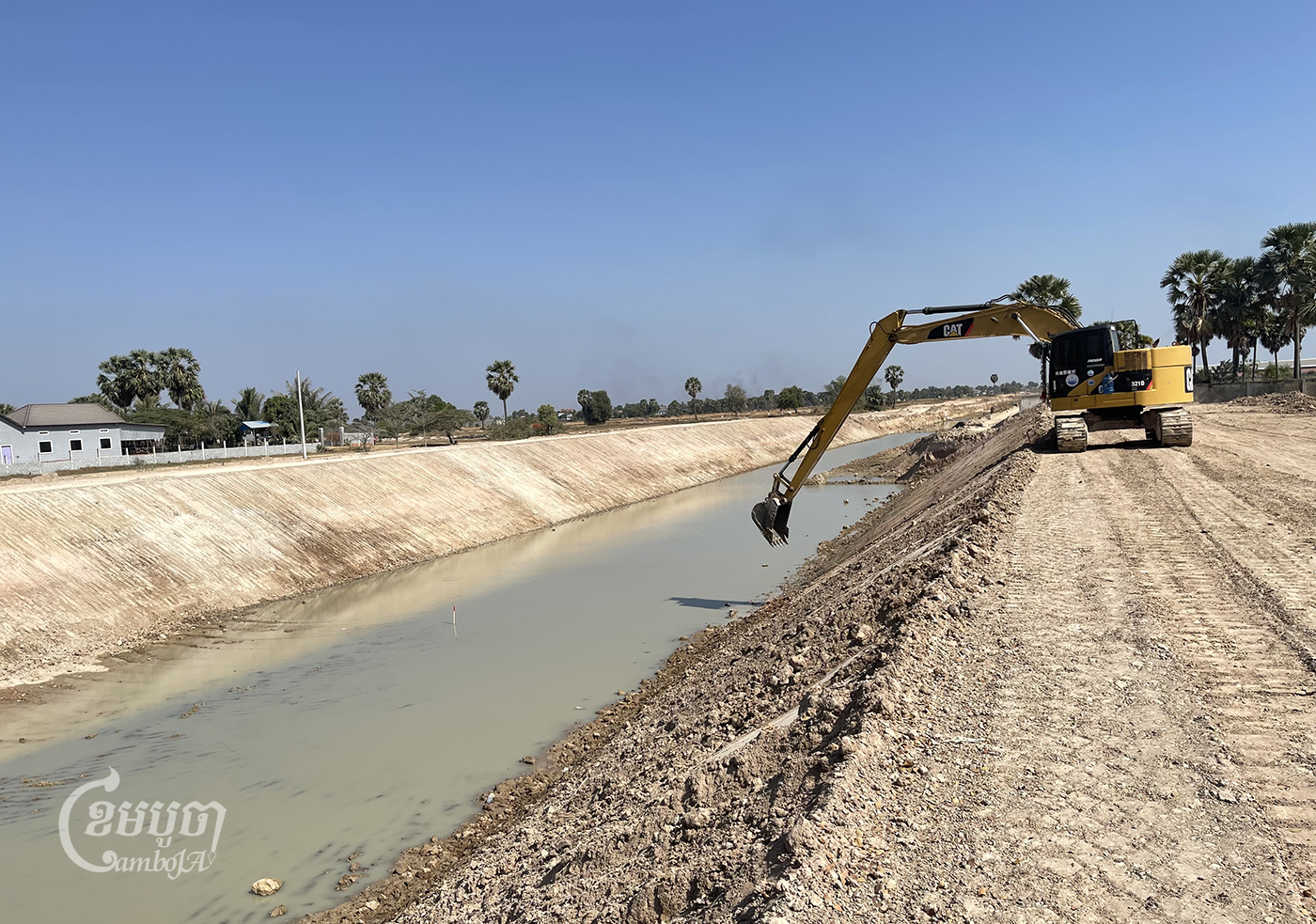
The Touch stream-Chong Rok commune canal will be developed on state land, but due to the land situation, it is necessary to widen both sides of the canal by an additional five meters to the existing 50 meters canal.
Assuming the farmlands are along the 50-meter canal, affected villagers would not be compensated because it is state land. However, they will be paid if their farmlands are acquired for the additional five-meter expansion.
For the second direction (Chong Rok commune to Slakou), the existing state canal is 34 meters wide, so eight meters of land would be acquired from either side of the canal to expand the surface to 50 meters. Compensation would only be paid for eight meters of land that are taken up for the canal.
The land assessor, General Department of Resolving Impact Policy, will go to Prey Vihear in about two weeks, as they are presently implementing compensation for those in the Touch stream area.
Cheab Horng said the communities will be duly informed about the compensation, adding that he could not explain during the meeting as the project began the next day.
Deputy director of Impact Resolution Department Pal Chhan, told CamboJA that affected people were informed of the project between January 22 and 24, 2024. Following the dissemination of information, impact assessment on people’s properties began.
“Compensation will be made when the impact assessment is completed. The settlement will be based on the rates by an independent professional agency,” he said. “Compensation is only for land owned by the people”, adding that the state does not pay compensation for forage land.
Yang Kim Eng, president of the People Center for Development and Peace, said a good way to avoid misunderstandings or problems would be to discuss and reach an agreement with the people, instead of “implementing and then informing the people”. Doing this, deprives citizens of pertinent information on the development.
“Notifying people a day or two in advance is not appropriate because it is important to discuss and exchange ideas,” he said. “I think in order to avoid the problem [in future], there should be time for dialogue between the authorities and the people, and also to listen to each other.”
“Don’t think that because the authorities are developing a project for the people, they need not ask them. It’s not the right thing, especially with regards to compensation principles.”


